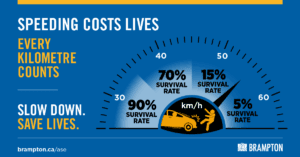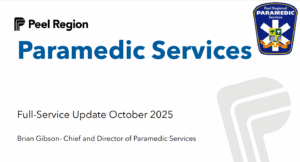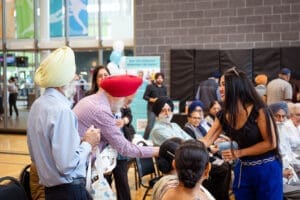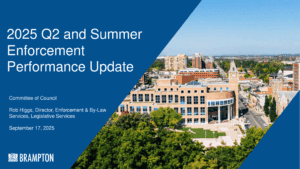Automated speed enforcement (ASE) cameras are working to capture vehicles that are speeding at extremely dangerous levels on our roads. The top 10 speeds and locations as follows:
McVean Dr / North of Tappet Dr – 200km/h in a 50 km/h zone |
Heart Lake Rd / North of Copperfield Rd – 186km/h in a 40 km/h zone |
Clarkway Dr / South of Castle Oaks Crossing – 172km/h in a 50 km/h zone |
Cottrelle Blvd / East of Valley Creek Dr – 153km/h in a 40 km/h zone |
Worthington Ave / South of Spencer Dr – 143km/h in a 40 km/h zone |
Financial Dr / North of Plentywood Dr – 142km/h in a 40 km/h zone |
Rutherford Rd N / South of Madoc Dr – 139km/h in a 50 km/h zone |
Central Park Dr / North of Hanover Rd – 137km/h in a 50 km/h zone |
North Park Dr / South of Nuttall St – 137km/h in a 40 km/h zone |
Central Park Dr / East of Goldcrest Rd – 137km/h in a 50 km/h zone |
Many residents ask why Brampton uses Automated Speed Enforcement (ASE) cameras instead of physical speed bumps or cushions on some roads. The answer comes down to safety, efficiency, and effectiveness.
On larger, busier roads, traditional traffic-calming devices like speed cushions can actually make things worse — causing sudden braking, rear-end collisions, congestion, and delays for transit and emergency vehicles. These roads carry higher traffic volumes, and drivers must stay alert for pedestrians, cyclists, and signals. Forcing abrupt slowdowns here can increase risk rather than reduce it.
ASE cameras, on the other hand, are proven to encourage drivers to slow down gradually and consistently, especially in Community Safety Zones near schools. They don’t create noise, vibration, or congestion, and they keep emergency routes clear.
When deciding where to use ASE or speed cushions, the city looks at:
Road width & traffic volume — wider roads with more lanes are better suited for ASE.
Access points & driveways — too many make speed cushions unsafe.
Existing success — ASE has worked well in Brampton since 2020.
Infrastructure — availability of streetlight poles, power access, and clear sightlines for cameras.
Public input — residents’ feedback always matters.
By using the right tools for the right streets, Brampton makes our roads safer for everyone — drivers, pedestrians, cyclists, and especially our children near schools.

